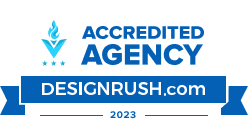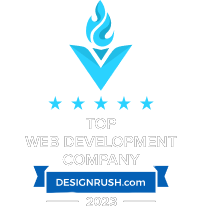Beyond Aesthetics: Functionality in High-End Web Design
Beyond Aesthetics: Functionality in High-End Web Design

No longer is high-end web design beauty enough. A modern website should meld beauty with functionality to churn out great user experiences. At Lingows Media, we understand the pivotal role functionality plays in crafting websites that not only attract but also engage and convert visitors. In this article, we unveil the key components of functional web design, focusing on key strategies and considerations to elevate the user experience that drives business success.
Understanding Functional Web Design
What Is Functional Web Design? Functional web design is more than just aesthetic; it should always be functional and have usability—the essence of features is user-centered. It concerns the development of well-thought-out, intuitive interfaces that make the process of navigating and interacting with the interface smooth.
Functionality in Web Design A functional website ensures user satisfaction, engagement, and high conversion rates because design elements adhere to business goals by reaching measurable outcomes.
Key Features of
Functional Web Design
- User-Centric Navigation: Good structures in navigation will lead users through the website effectively. And that will be clean and clear for the user's ease of use, menus, breadcrumbs, and search features.
- Responsive to Mobile: This means that websites must be easily adaptable to every device and screen size, as the trend is the increasing use of mobile. Responsive design provides an optimal viewing experience across all platforms.
- Optimization of Speed and Performance: An extremely fast-loading website reduces the bounce rate, a crucial factor in user retention. Optimizing techniques, including caching, image compression, and minification, increase overall performance.
- Features of Accessibility: Features such as alt texts for images, keyboard navigation, and color contrast compliance ensure that all users can access websites, irrespective of any disabilities, due to the practice of inclusive design.

Strategies for Implementing
Functional Web Design
- Do User Research: Research about user behaviors and preferences allows design elements to be effectively tailored such that the users' expectations are met.
- Ordering of Contents: Properly organized content allows easy retrieval of information. Use content hierarchies, grids, and intuitive layout systems to enhance the presentation.
- Making It Interactive: Engage users through interactive features: sliders, tooltips, and accordions to enhance interaction.
- Implementation of SEO Best Practices:
Optimizing a website for search engines would enhance its visibility and drive organic traffic to the website through the strategic use of keywords, meta tags, and structured data to optimize
SEO performance.
How
Functional Web Design Drives Business Success
- Made More User-Friendly: Websites working effectively will produce users who return happily.
- Higher Conversions: Improving how people transact through functional design is key to driving conversion rates and ROI, as it shortens user journeys while reducing friction.
Conclusion
In the highly competitive digital world of today, high-end web design goes further than just being pretty. It's more about functionality and experience. At
Lingows Media, we apply years of experience with functional web design to build customized web solutions in light of business goals that exceed user expectations.













